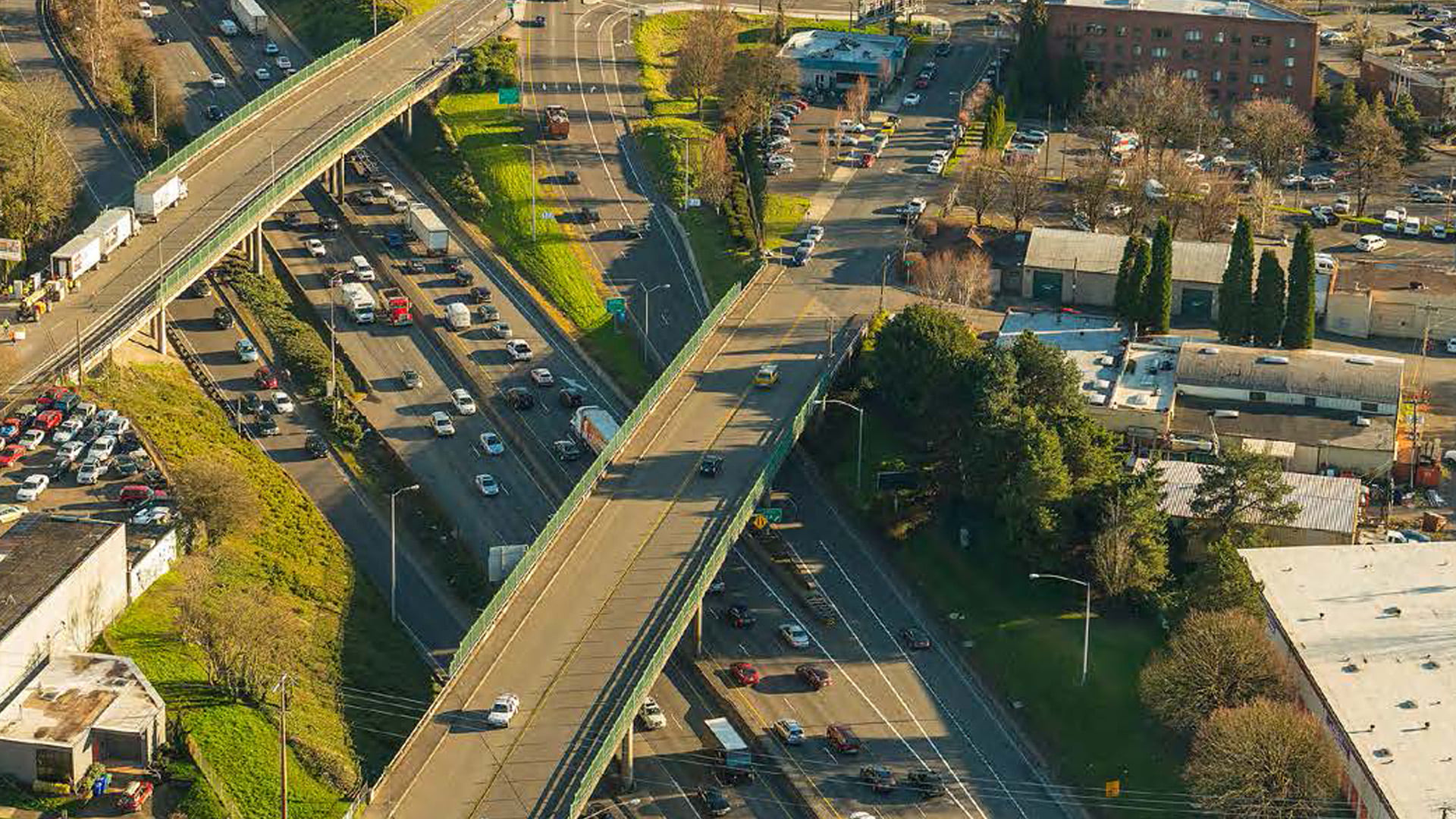
Project Improvements
Select the improvement feature to learn more.
- Highway Cover
- Hancock Crossing
- Multimodal Local Street Improvements
- Pedestrian and Bicycle Bridge
- Auxiliary Lanes and Shoulders
- I-5 Southbound Off-Ramp Relocation
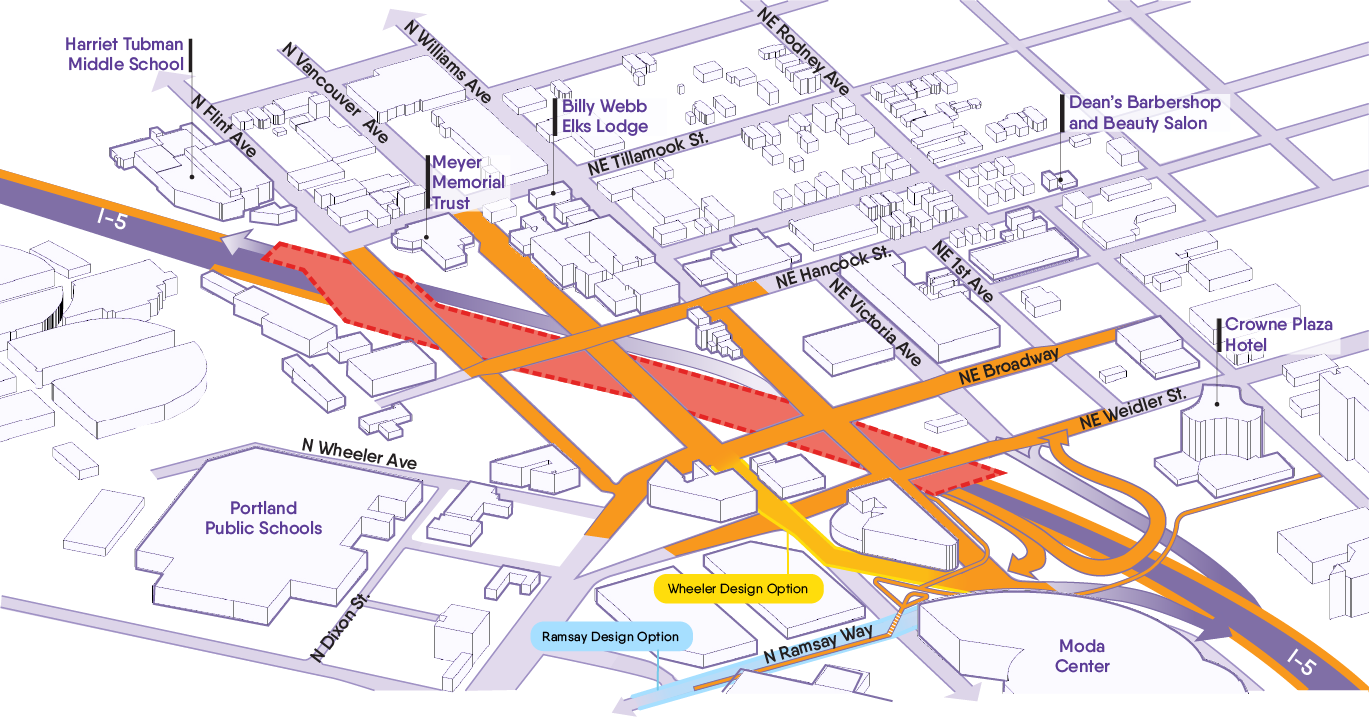
A new highway cover over I-5 that will reconnect local streets and create new community spaces on top for future development and economic opportunities.
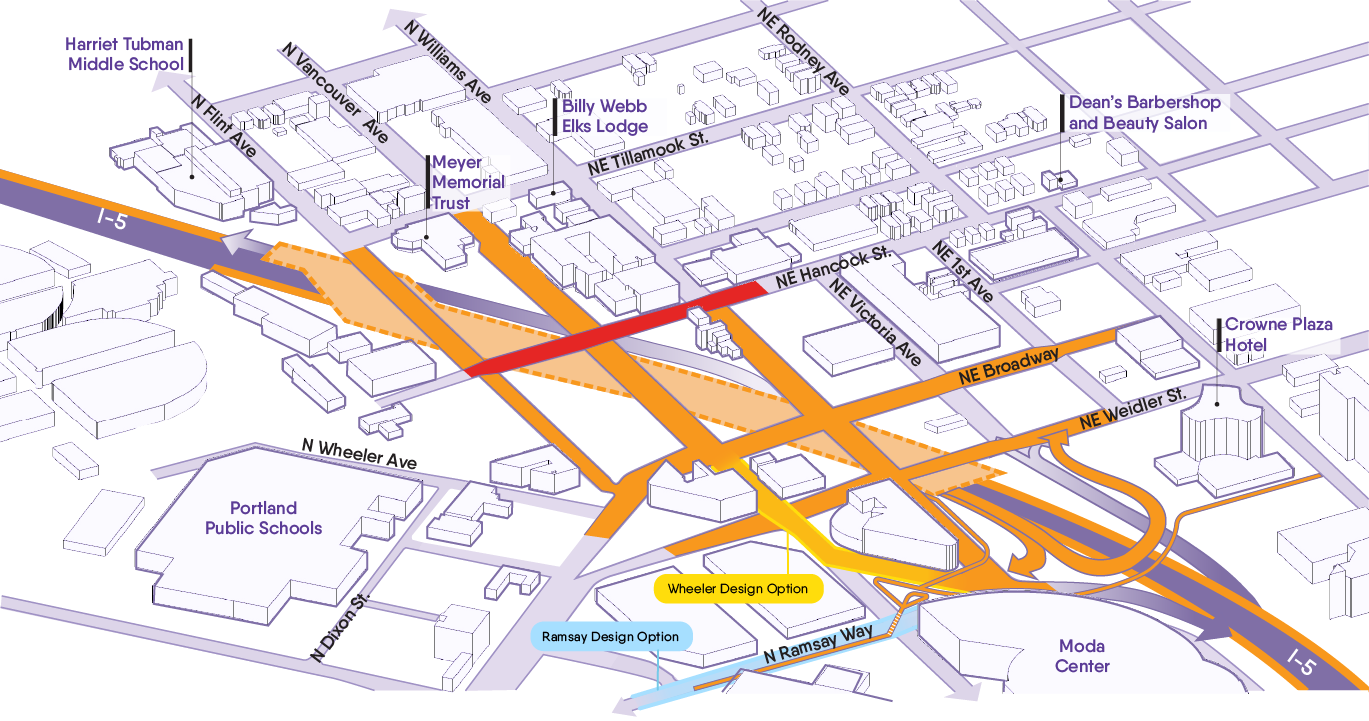
A new east-west roadway crossing over I-5 that will reconnect Hancock Street across the highway, adding another crossing north of Broadway/Weidler.
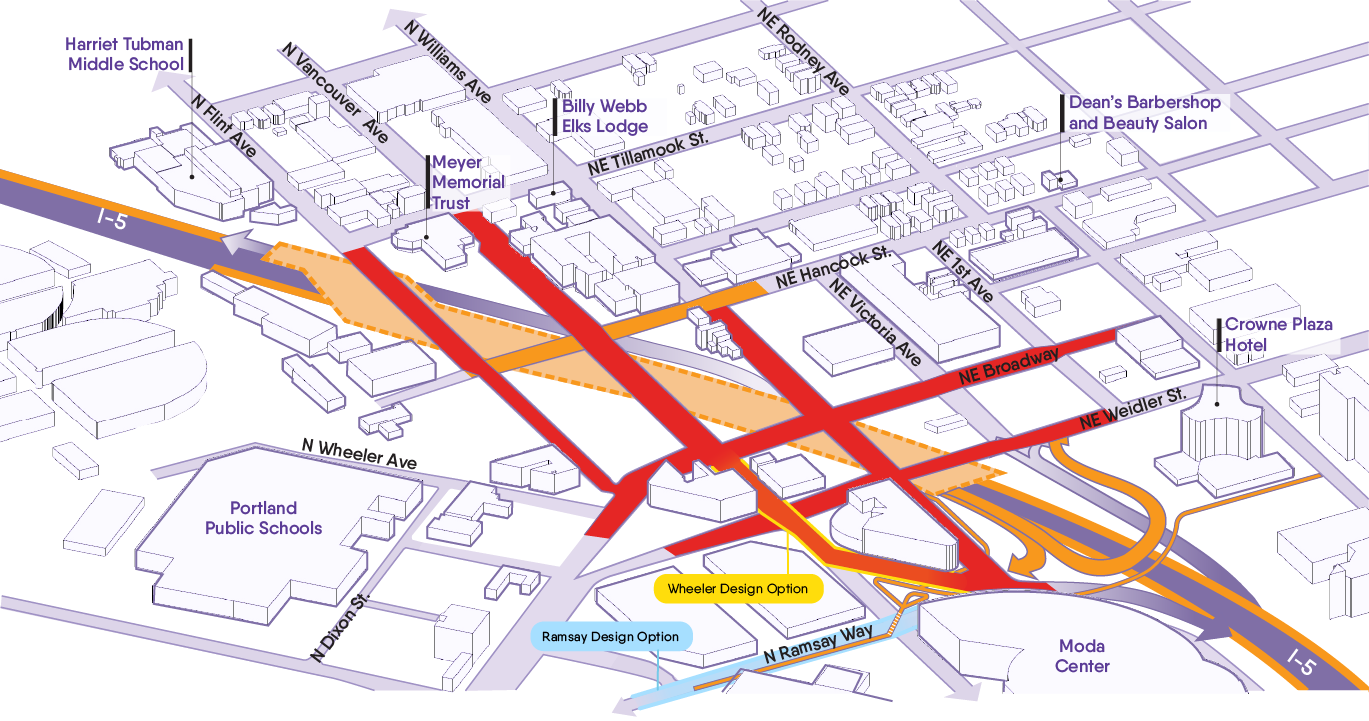
A variety of street improvements for people walking, biking and rolling.
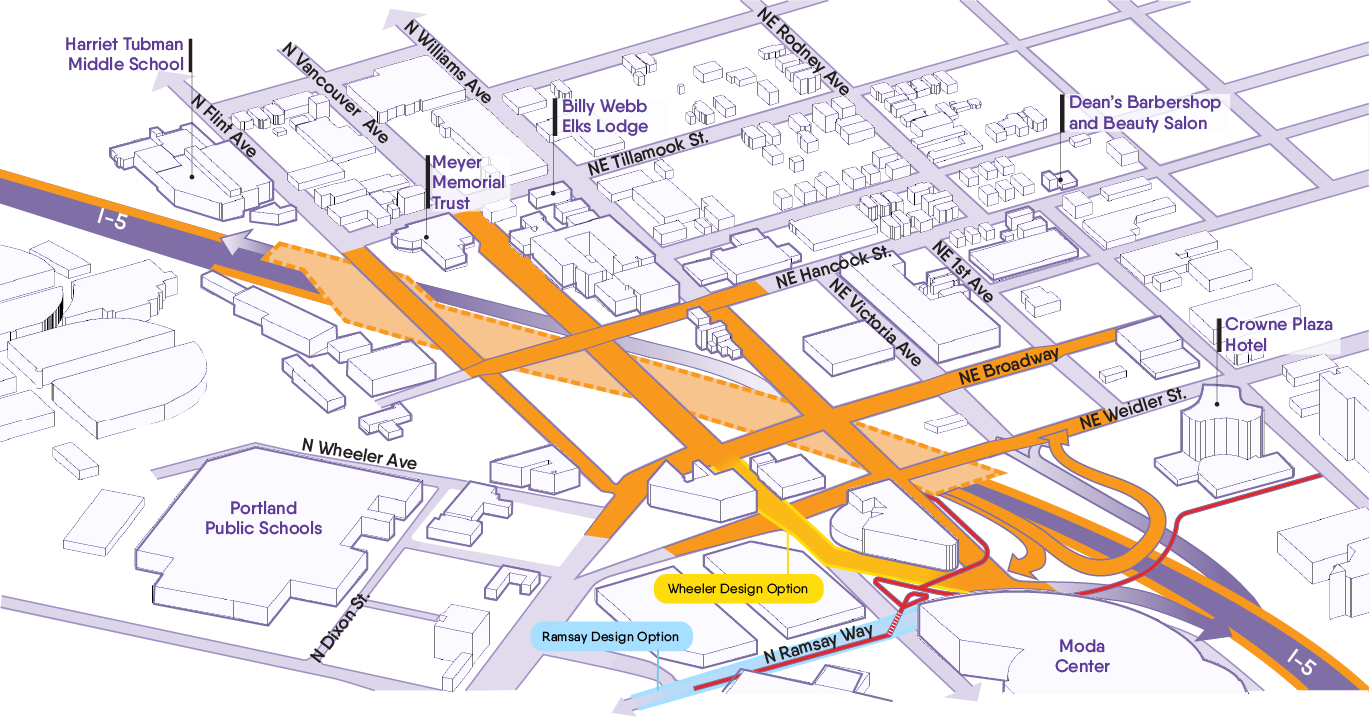
A car-free bridge that will create a new path over I-5 to connect with the walking and biking network.
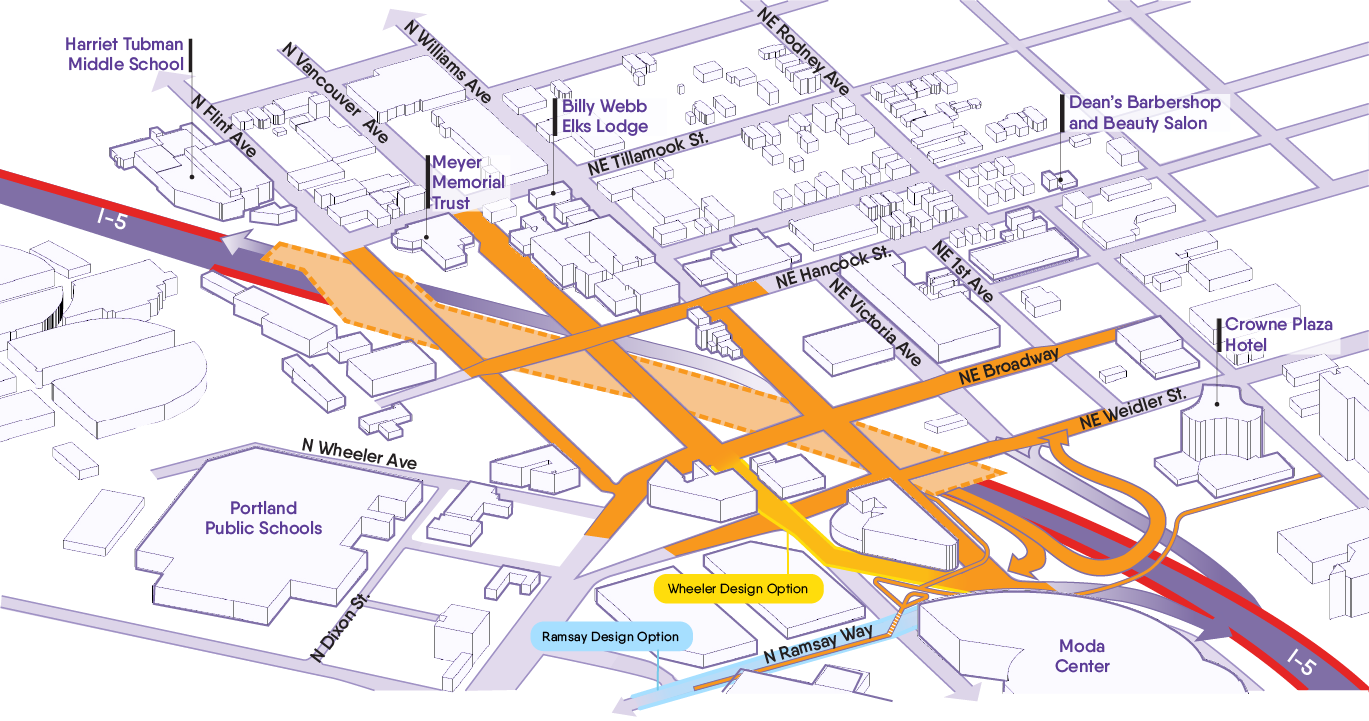
Ramp-to-ramp connections on I-5 between I-84 and I-405, paired with wider shoulders, that will improve safety and reduce congestion at the state’s top bottleneck. An estimated one-third of traffic will be able to stay on these ramp-to-ramp connections to travel between interstates instead of merging and causing congestion and safety issues.
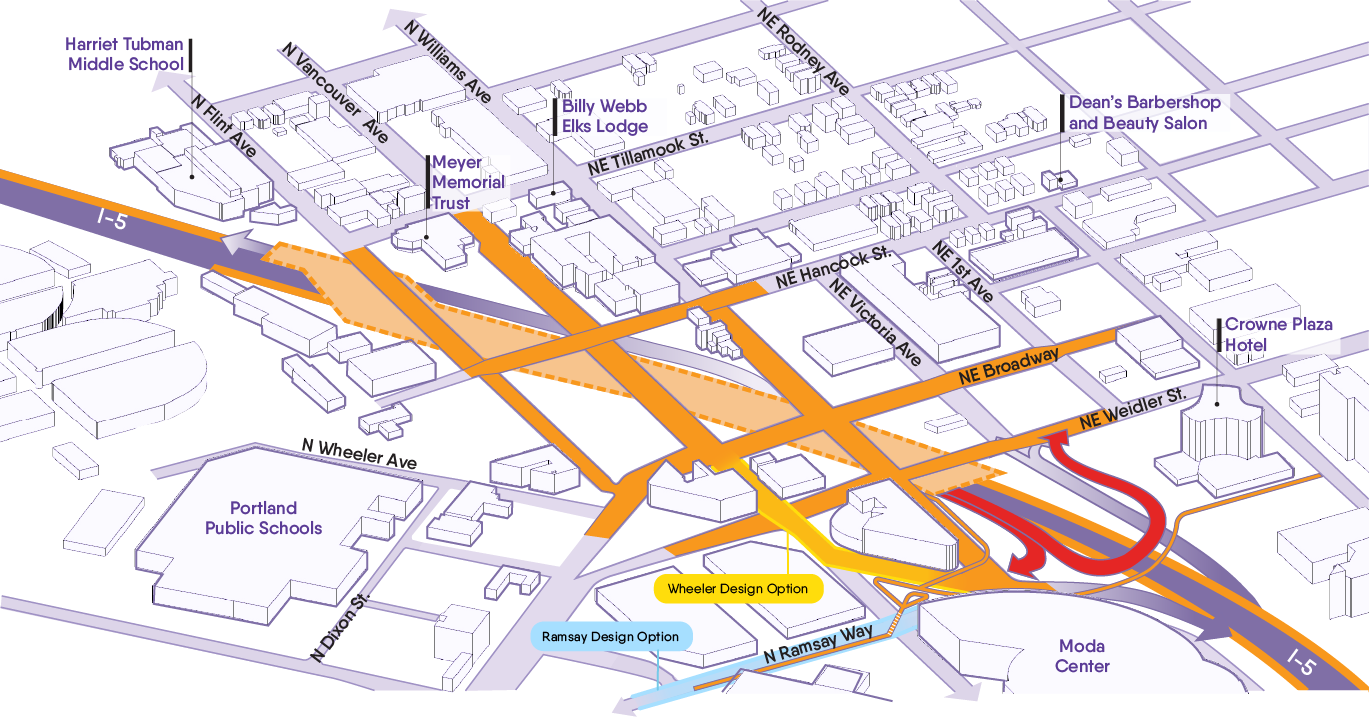
Relocation of the I-5 southbound off-ramp from Vancouver/Broadway to the south, connecting with NE Williams Avenue and NE Weidler Street.
In response to public comments made during the project’s Supplemental Environmental Assessment, a new design dubbed the “Flyover” will reroute two-thirds of the I-5 off-ramp traffic to the east of I-5. This design makes walking, biking and rolling safer; reduces car and transit delays; supports redevelopment opportunities for the Albina community and maintains similar Moda Center event access.
Please note that this graphic is conceptual, and the project design and cover shape may change as design progresses.
Did you know?
Project Timeline

Select a node on the timeline to learn more.
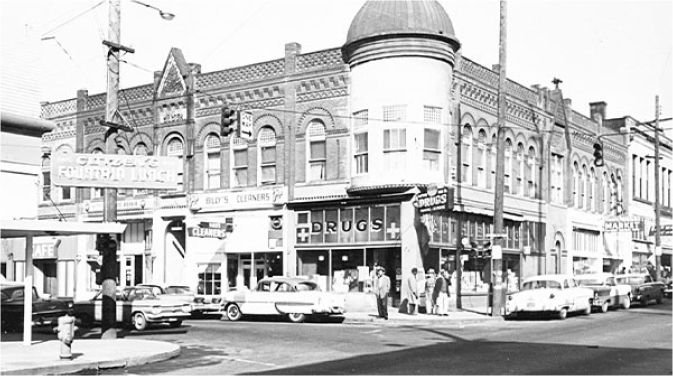
HISTORY IN ALBINA
AND LOOKING TO THE FUTURE
During the 1950s and 60s, construction of the federal interstate system displaced more than a million Americans and had a profoundly negative impact on communities of color.
In Portland, generations of Black families in the Albina neighborhood still experience the lasting harm from the loss of their homes, businesses, places of worship and social gathering spaces. The construction of I-5, the Veterans Memorial Coliseum, Legacy Emanuel Medical Center, Portland Public School headquarters and "urban renewal" projects divided and displaced communities in North and Northeast Portland.
Get Involved
Send Us A Question Or Comment
Call us at 503-470-3127 or email us at i5rosequarter@odot.oregon.gov with any questions or comments. We make every effort to respond to inquiries within five business days.
Join Our Mailing List
Stay in the loop by viewing our past email updates or by signing up for our mailing list.


